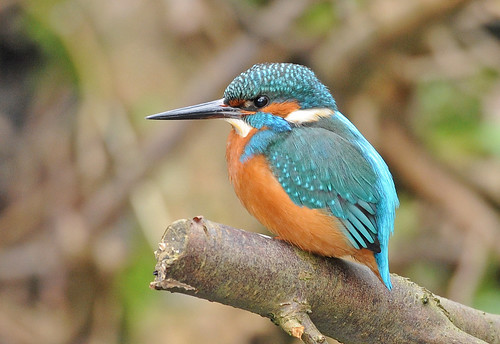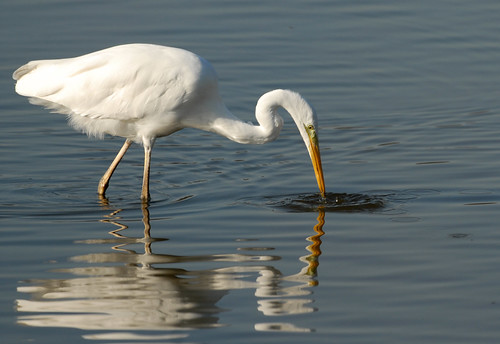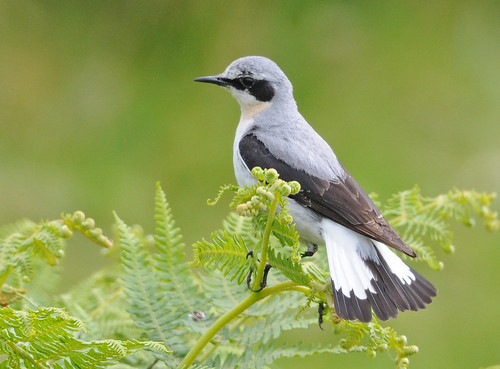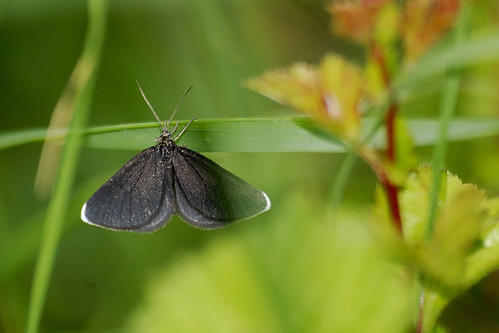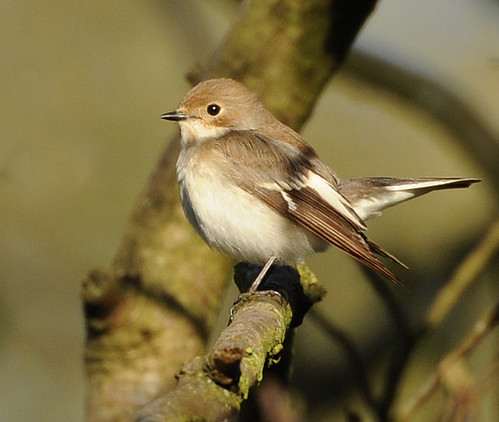....and so does BR's photograph.
I found a Sanderling on Plover Scar this afternoon with 'about' 60 Dunlin, 20 Ringed Plover, and 8 Knot, it was the 'Bird Of The Day' in my book being a scarce species anywhere in the recording area outside the migration periods of spring/autumn, obviously this bird fits the latter but at Cockersands it is a very uncommon bird. Also of note, an adult Mediterranean Gull was off Crook Cottage and a Ruff flew by with a 'few' Redshank, a Whimbrel seen, and 26 Eider were off Plover Scar.
Little Egret. David Cookson
A visit to Pilling Lane Ends at high tide went unrewarded though I should remember the Little Egret I saw no longer causes the mass invasion of birders it would have done not all that many years ago, c.35 Goldfinch were of note as were another 16 west of Fluke Hall from the coastal path with at least 10 Wheatear also along here. The effort of a walk to Cockers Dyke also went unrewarded save 7 Grey Plover one of which still retained its immaculate full summer plumage.
Mediterranean Gull. Pete Woodruff.
At Glasson Dock after the tide had ebbed by three hours I found a juvenile Curlew Sandpiper about two seconds before it did a disappearing act, an adult Mediterranean Gull, Redshank/Lapwing numbers were at the 1,000 mark, c.40 Dunlin, I made no notes on the Redshank but unremarkable numbers, up to 40 Goldfinch were of note.
As opposed to the usual start of the day, Conder Green took up the rear today with just time to find a Spotted Redshank and 2 Greenshank in the creeks, and look over Conder Pool to find a zero of interest save a nice man who innocently feeds the Mute Swans regularly anywhere he finds them, and was today waving two slices of bread at them through one of the viewing slits, to be kind to him I'd have to call him....'naughty but nice'.













